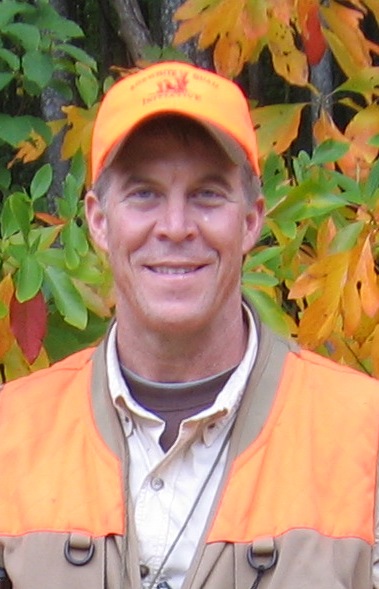Major wildlife conservation policy gains come infrequently. Even rarer are victories so profound as to cause tectonic shifts in the conservation arena. The NBCI’s flagship Natives First concept, included for the first time in the 2018 Farm Bill Managers’ Report, is a victory that can shift the tectonic plates in favor of grassland birds.
The concept is straightforward: establish a native vegetation preference standard for all USDA agricultural conservation and cost-share programs. That is, reverse the traditional USDA default of relying on aggressive introduced vegetation from other continents by making native vegetation the first choice for publicly funded programs, unless there is a specific compelling reason not to. The USDA agriculture agencies are the only federal conservation agencies lacking a native vegetation preference policy.
Across the bobwhite range, some 90 million acres of “improved” pasture—established to near-monocultures of introduced forages from other continents—have been encouraged and subsidized by USDA. These 90 million acres provide poor habitat for bobwhites and most declining grassland birds, and are lost conservation opportunities for bobwhites, most grassland birds, and pollinators. Likewise, USDA soil and water conservation practices on croplands still rely heavily on aggressive introduced vegetation that minimizes wildlife habitat opportunity, even though native plants provide similar or better soil and water conservation benefits as the exotic plants.
In the 1980s, federally subsidized wetland drainage and conversion was still standard business. Waterfowl conservationists were slowly accelerating the pace of wetland restoration, but couldn’t keep up with the continuing wetland losses. Waterfowl groups engineered a bold effort to shift the playing field in their favor, convincing the George H.W. Bush Administration to institute a “No Net Loss / Net Gain” federal policy for wetlands. This policy succeeded in reducing wetland acreage losses to a point that wetland restoration caught up and began overtaking the losses, reversing longstanding trends. “No Net Loss / Net Gain” was a tectonic shift for wetlands.
Serious bobwhite conservationists understand and are united about native vegetation being as important for bobwhites as wetlands are for ducks. Native vegetation won’t automatically provide good bobwhite habitat, for ongoing active management is necessary to maintain the habitat quality. However, every acre dominated by aggressive introduced grasses such as fescue, bermudagrass, smooth brome, bahiagrass, weeping love grass, and old world bluestems is automatically a poor quality acre for bobwhites and most declining grassland birds.
The old rationales for clinging to aggressive exotic species are obsolete and wearing thin. New localized varieties of natives are continually being developed and produced for more ecoregions. Establishment of new stands of natives now is routine technology. Profitable management practices for native livestock forages are being developed. A dependable, predictable demand (such as would be created by a federal native vegetation preference policy) would enable seed producers to address lingering supply and cost concerns. The increased resource benefits of natives for soil, water, and wildlife would improve benefit/cost ratios for public expenditures. Finally, a new generation of resource conservationists is more aware of the values and willing to use native vegetation.
NBCI conceived and developed Natives First in 2011. National leadership in Washington, DC, by then-NBCI staff Bridget Collins and Kyle Brazil quickly began raising attention to the foundational problem and advancing the native vegetation preference concept among USDA leadership. NBCI and the National Bobwhite Technical Committee (NBTC) have since been persistently shepherding a slowly growing national native vegetation movement of determined bobwhite and grassland conservationists. The tectonic plates shifted when then-Chair of the House Agriculture Committee Michael Conaway (R-TX) heard NBCI’s case, and he and his congressional colleagues included unprecedented instructions to USDA in the 2018 Farm Bill Managers’ Report:
“The Managers recognize the benefits of native vegetation to improve water and air quality and enhance soil health. By encouraging the adoption of native vegetation seed blends, USDA programs are supporting habitat restoration for the northern bobwhite, lesser prairie-chicken, greater sage-grouse, other upland game birds, songbirds, monarch butterflies, and pollinators. The Managers encourage the use of native vegetation where practicable.”
It took eight years of persistent education and advocacy by NBCI (led in recent years by Jef Hodges and Tom Franklin, with vital support from the Park Cities Quail Coalition) and the undaunted professionals of the NBTC’s Grazing Lands/Grasslands Subcommittee to achieve this milestone victory. This language is a gentle start down an important path, and may need to be reinforced in the next farm bill. However, I contend that no other single federal policy improvement could have as much long-term value for bobwhites and grassland wildlife in agricultural landscapes as this Natives First victory.
We bobwhite folks have earned the right to celebrate and enjoy this hard-earned moment, so I will be sure to toast all my quail colleagues and friends tonight! But only briefly. We have been in this game long enough to know that an improved federal policy is only as good as its effective implementation at the national, state, and local levels… and that effective implementation requires the bobwhite community’s continuing advocacy and vigilance.


